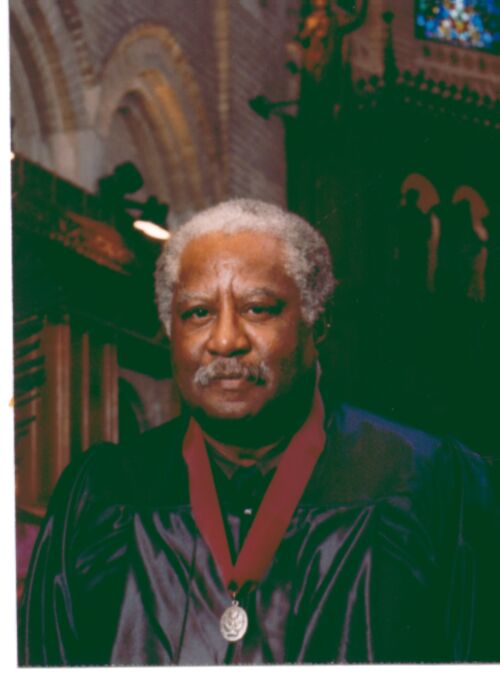| Home Page
Biography
R.T.G.S.A.
How To Purchase Book
Favorite Links
|
Melvin Mitchell, FAIA
He was born in New Orleans, La. and educated in the public schools of the Watts section of South Central Los Angeles. Melvin entered Howard University in 1962. Upon graduation in 1967, Melvin worked as a community planner in the "War on Poverty" program during the era of black consciousness and urban rebellions in DC.
In 1969, Melvin entered the Master of Architecture program at Harvard and returned to DC in 1970 as an assistant professor at Howard. After seven years Melvin left Howard to concentrate on his growing housing practice. In 1987, Melvin resumed full-time teaching at the University of the District of Columbia. In 1997, Melvin became the head of the fledgling architecture school at Morgan State University in Baltimore. Melvin became increasingly alarmed by several things which led to his writing this book.
As an architect during the 1970-1998 Marion Barry-Black Power era in Washington, DC, Melvin saw riot torn black neighborhoods partially rebuilt but with minimal gains for the "black economy" or black cultural re-integration across class lines. A few black architects, Melvin included, received lucrative professional contracts from Barry to design isolated low-income public housing projects and public schools but nearly all of the hundreds of millions of municipal and federal dollars spent for black community redevelopment and construction flowed immediately out of black communities.
It began to occur to Melvin that black communities were not following the several early 20th century precedents that resulted in holistic redevelopment. The Tuskegee campus and numerous black new towns throughout the South were the most prominent examples of this. Also at that time in areas of the "performing arts" most notably music and dance black people epitomized excellence in American cultural life. So why, Melvin kept asking himself, was architecture so glaringly excluded from 20th century black cultural life?
Melvin embarked upon writing his first book as part of a search for answers. He began with several hypotheses:
(1) That black genius underlay original modern American music, dance, art, and possibly architecture.
(2) That architecture should have been an integral part of black cultural excellence that was asserted during the Harlem Renaissance.
(3) That Black America had abdicated responsibility to others for housing her people.
"The Crisis of the African-American Architect: Conflicting Cultures of Architecture and (Black) Power" is an opening attempt to find what role trained black architects played (or failed to play), the role of the HBCU (historical black colleges universities) architecture programs, and what changes of course are required in the 21st century.
|
 |
|
|
|

